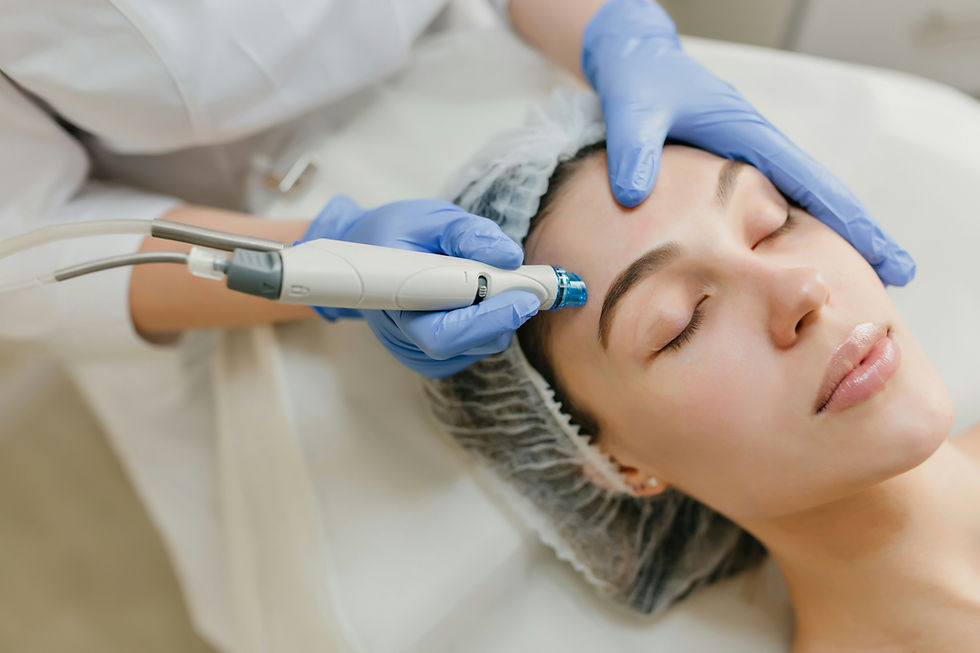Dental Hygiene and Preventive Dental Care
- anikapearlnecosia
- Nov 11, 2022
- 3 min read
Dental Hygiene refers to the practice of cleaning and maintaining the teeth. It involves cleaning tartar, plaque, and stains from teeth and performing preventative procedures. Dental hygienists are registered with dental associations or regulatory bodies. The goal of dental hygiene is to maintain the health of patients. Visit Smiles Dentistry Toronto to learn more.
Examines patients for oral disease
A physician's physical examination of the oral cavity is an integral part of the care of patients with various diseases. It has been used for over a century and has been proven to reduce the morbidity and mortality associated with oral disease. Morgan et al. studied eighty-four percent of physicians who performed oral cavity examinations.
The examination includes palpation of the lips, the buccal mucosa with the tongue blade, and observation of the hard and soft palate, uvula, and oropharynx. The patient is asked to extend it as far as possible and to tilt the tongue to the side. The lingual tonsils are visible on the posterior-lateral aspect of the oral language and can be enlarged with viral infections.
The examination also includes a screening for oral cancer. The dentist will check the lymph nodes in the neck and face for abnormalities and examine the tongue, cheeks, lips, and the floor of the mouth. Early detection of oral cancer is the key to successful treatment. The dentist will also educate patients about oral hygiene, including fluoride toothpaste and brushing techniques.
During an examination, the dentist will examine the patient's teeth and jaw structure and note any abnormalities that may indicate other conditions. He may also look for tooth decay, gum disease, or impaction and examine dental implants or restorations. The dentist will also review the patient's medications, if applicable.

Removes tartar, stains, and plaque from teeth
In addition to being a bothersome cosmetic problem, tartar can be a significant health concern. If not adequately removed, it can cause several problems for your oral health, including bad breath and general staining. Fortunately, several methods can remove tartar and stains from teeth.
The first step in removing tartar and stains is brushing your teeth regularly. You can remove most of the plaque already on your teeth by brushing daily. Over time, however, plaque will combine with the minerals in your saliva and harden to form tartar. It is estimated that 92 percent of adults in the United States have some tartar on their teeth. Getting rid of tartar and maintaining oral health are the best ways to protect your smile and overall health.
Among the many natural methods for removing tartar, you can apply a paste made from orange peels. To make this paste, rub the inside of an orange peel across your teeth and rinse with water. Aloe vera is also a good choice for removing tartar from your teeth due to its antimicrobial properties.
You can also try using a water flosser to clean your teeth. Using coconut or olive oil to scrape away tartar can also be effective. Next, try scaling and root planing for more severe tartar buildup, which your dental professional may recommend. Finally, your dental professional can clean your teeth using an ultrasonic scaler or hand-held dental curettes.
Performs preventative procedures
Preventive dental care is a broad category of dental procedures and services. Preventative care aims to prevent dental problems and promote good oral hygiene. By conducting regular dental checkups, a dentist can detect problems early and provide preventive treatments. These services are not limited to fillings and root canal therapy but also include orthodontics and periodontal treatments.
The primary goal of preventive dental care is to prevent tooth decay and gum disease. It involves regular exams of the mouth, jaw, and neck. These exams can detect changes that could lead to gum disease or oral cancer. In addition, these preventative procedures help people maintain a healthy smile and avoid costly dental repairs.
One of the most common preventative dental treatments involves applying sealants to teeth, which act as barriers against bacteria that cause tooth decay. These coatings help protect teeth from damage from bacteria and food and also reduce the risk of tooth decay and gum disease. This preventative procedure is especially valuable for young children. In addition, the procedure is painless and involves only a small amount of time.
Other preventative dental care procedures include dental exams and cleanings. Regular dental cleanings are a vital part of oral health. A dentist checks for signs of tooth decay, gum disease, and oral cancer and then uses digital x-rays to check for any problems that the visible part of the mouth might hide. These professional cleanings may also involve a deep cleaning of teeth and gum disease, called scaling and root planing.



Comments